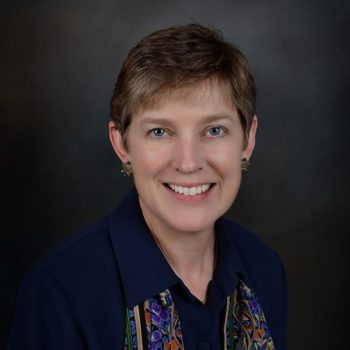Evaluation, at its heart, is a data-driven tool that helps us to look back and reflect. The Maine Health Access Foundation (MeHAF) regularly utilizes that tool to examine the success and impact of our grant programs.
We regularly ask grantees to evaluate their own work (and, importantly, we provide them with support to do so). In our large grant programs, we often bring in the resources of external evaluators. These purposeful reflections help grantees, foundation staff, our Board, and our Community Advisory Committee understand what grantees have learned and accomplished, and whether goals for the overall program have been achieved. The process also allows us an opportunity to assess our own processes relative to particular grant initiatives so that we can understand how to do things in ways that most effectively support our grantees and partners.
Evaluation is also one way that MeHAF staff prioritize involvement with our grantees — engaging with them from the RFP process, through final reports, to post-grant assessment. These intentional touchpoints create a natural back and forth from staff to grantee about how we are doing in our role as a funder.
While this is a valuable feedback loop, it does not, however, answer a simple question: How are we doing overall?
On the surface, this question seems like it should be an easy one to answer. We examine how many grants we made and how many dollars we spent. We assess how well the work we’ve funded aligns with our strategic goals. While all of this is important and addresses what we have done, it doesn’t get to the question posed above: How are we doing? And more importantly, how do the organizations we work most closely with — our grantees — think we are doing?
Enter the Center for Effective Philanthropy (CEP).
Through the Grantee Perception Report (GPR), CEP provides funders with data that fosters a rich understanding of their work and helps them to compare with peers. The GPR harnesses grantee feedback to help foundations identify areas for improvement in how they interact with applicants and grantees — both in personal interactions and in relation to the steps and requirements of grant processes. It also assesses how much a funder understands and is having a positive impact on its grantees and in their fields of work. MeHAF has participated in this valuable exercise engaging in honest feedback from both grantees and declined applicants three times — and 2020 will mark the year we do so for a fourth time.
To say that the lessons learned from our previous surveys are invaluable would be an understatement. In the Foundation’s first surveys, in 2004 and 2009, it became apparent that MeHAF’s grant forms were far too complicated. Foundation staff learned that it took some grantees roughly 80 hours to complete an application, responses to the questions took far too long to write, and what was labeled as “support” for grantees came with too many strings attached.
Changes as a result of our initial CEP survey took a number of years to make, but had long-lasting impact. From 2005 to 2010, MeHAF doubled the size of its program staff and continued to simplify application processes. Our Discretionary and Meeting Support Grants program, which allows funding for ideas and projects that fall outside of more prescriptive funding opportunities, was also created in response to feedback that CEP helped us collect from grantees.
The results from our 2015 survey showed the fruits of our ongoing efforts. Based on the responses from declined applicants and funded grantees that year, we learned that MeHAF was considered to be a generally supportive and accessible funder. We also learned that grantees appreciated honest and supportive relationships with MeHAF staff.
MeHAF’s experience is, in fact, consistent with what CEP sees when they look across funders that have used the GPR multiple times. As detailed in a recent piece in Washington Monthly (which mentions MeHAF’s story), CEP’s data shows that funders that survey their grantees repeatedly make consistent improvements over time, “tend(ing) to receive higher ratings from their grantees on a variety of important relationship measures, including the clarity of their communications, their responsiveness, and their approachability when problems arise.”
Along with our improvements, however, we also learned that ratings for our understanding of grantee and declined applicant organizations had decreased. And although our applications no longer required 80 hours to complete, the process was still complicated and required a major investment of time that created barriers for some organizations.
Two anonymous quotes from the 2015 survey best summed up CEP’s findings:
- “They [MeHAF] make you feel like a partner in the work to make our communities healthier.”
- “MeHAF is one of the most involved funders we deal with… This is a double-edged sword: They are very helpful, but at times their processes/interactions/communications can be exhausting.”
Since 2015, MeHAF has undertaken even more significant changes. We have placed an intentional focus on health equity in all of the work we do, moved some programs to unrestricted funding, and last year we opened the first of two new responsive grant opportunities.
Reflecting on the results of the previous three CEP surveys has also led MeHAF staff to place even more emphasis on close involvement with our grantees. Through meetings, events, convenings, and one-on-one interaction, staff make a point to be available whenever needed and to gather — and respond to — grantee feedback.
As in MeHAF’s earlier stages, it now feels like the right time to revisit how we are doing. And so, in our 20th anniversary year, we will embark on our fourth grantee survey with CEP. We are confident that, without question, we will learn even more about the work we have done — and build a stronger foundation to do better work in the future.
Barbara Leonard is president and CEO of the Maine Health Access Foundation (MeHAF).




